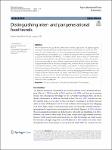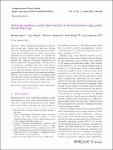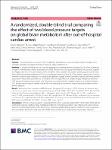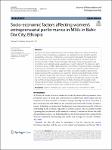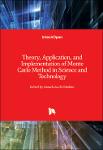Search
Author
- Osman, Ahmed I. (5)
- Daqing, Ma (3)
- Jorgensen, Ed (3)
- Li, Yan (3)
- next >
Subject
- kinh tế (26)
- Economics (12)
- programming (10)
- XRD (10)
- next >
Date issued
- 2020 - 2025 (2128)
- 2010 - 2019 (129)
- 2000 - 2009 (9)
- 1999 - 1999 (1)
Has File(s)
Search Results
While food trends are usually described over an entire population, this paper suggests distinguishing between inter- and pangenerational food trends. To classify the food trends for the total population as inter- or pangenerational, we used disaggregated household-based consumption data on 60 food categories over the period from 1990 to 2020 in Switzerland. We followed six different cohorts with a range of 10 birth years each and estimated robust trends for each generation and each product. Our results show that especially for meat, different generations follow different trends and form ‘intergenerational’ trends for the total population, whereas beans and peas would be an example of products with an increasing consumption for every single generation and a ‘pangenerational’ trend. |
While a popular representation of 3D data, point clouds may contain noise and need filtering before use. Existing point cloud filtering methods either cannot preserve sharp features or result in uneven point distributions in the filtered output. To address this problem, this paper introduces a point cloud filtering method that considers both point distribution and feature preservation during filtering. The key idea is to incorporate a repulsion term with a data term in energy minimization. |
Researchers are defining new types of interactions between humans and machine learning algorithms generically called human-in-the-loop machine learning. Depending on who is in control of the learning process, we can identify: active learning, in which the system remains in control; interactive machine learning, in which there is a closer interaction between users and learning systems; and machine teaching, where human domain experts have control over the learning process. Aside from control, humans can also be involved in the learning process in other ways. In curriculum learning human domain experts try to impose some structure on the examples presented to improve the learning; in explainable AI the focus is on the ability of the model to explain to humans why a given solution was ... |
This article is a natural continuation of the paper Tiwari, D., Giordano, P., Hyperseries in the non-Archimedean ring of Colombeau generalized numbers in this journal. We study one variable hyper-power series by analyzing the notion of radius of convergence and proving classical results such as algebraic operations, composition and reciprocal of hyper-power series. We then define and study one variable generalized real analytic functions, considering their derivation, integration, a suitable formulation of the identity theorem and the characterization by local uniform upper bounds of derivatives. |
This study aimed to assess the effect of different blood pressure levels on global cerebral metabolism in comatose patients resuscitated from out-of-hospital cardiac arrest (OHCA). |
Women’s entrepreneurship is the pillar of economic expansion in many developing countries and is increasingly recognized as an essential driver of economic growth, productivity, innovation, employment, and economic dynamism. This study aimed to investigate the socio-economic factors that affect women’s entrepreneurial performance in MSEs in Bahir Dar City, Ethiopia. This study employed explanatory and descriptive survey designs using a quantitative research approach. The data were gathered from a survey of 348 registered women-owned MSEs. Statistical models, including factor analysis, correlation, and regression analysis, were used to look for patterns and relationships between variables apart from other descriptive statistics. |
This open access book questions the stereotype depicting all Gulf (GCC) economies as not sustainable, and starts a critical discussion of what these economies and polities should do to guarantee themselves a relatively stable future. Volatile international oil markets and the acceleration of the energy transition has challenged the notion that oil revenues are sufficient to sustain oil economies in the near to medium term. But what is the meaning of economic sustainability? The book discusses the multiple dimensions of the concept: economic diversification, continuing value of resources, taxation and fiscal development, labor market sustainability, sustainable income distribution, environmental sustainability, political order (democracy or authoritarianism) and sustainability, regio... |
The Monte Carlo method is a numerical technique to model the probability of all possible outcomes in a process that cannot easily be predicted due to the interference of random variables. It is a technique used to understand the impact of uncertainty, ambiguity, and risk in forecasting models. This book is organized into three sections and presents the general principles of the Monte Carlo method with an emphasis on techniques to decrease simulation time and increase accuracy. Section 1 discusses the major fields of application of the Monte Carlo method in medicine. Section 2 introduces the theory and application of the Monte Carlo method in material science. Section 3 provides practical information needed to support simulation and analysis of structures by numerical models and intr... |
Tumour spheroids have been the focus of a variety of mathematical models, ranging from Greenspan’s classical study of the 1970 s through to contemporary agent-based models. Of the many factors that regulate spheroid growth, mechanical effects are perhaps some of the least studied, both theoretically and experimentally, though experimental enquiry has established their significance to tumour growth dynamics. In this tutorial, we formulate a hierarchy of mathematical models of increasing complexity to explore the role of mechanics in spheroid growth, all the while seeking to retain desirable simplicity and analytical tractability. |
We propose and analyze a family of epidemiological models that extend the classic Susceptible-Infectious-Recovered/Removed (SIR)-like framework to account for dynamic heterogeneity in infection risk. The family of models takes the form of a system of reaction–diffusion equations given populations structured by heterogeneous susceptibility to infection. These models describe the evolution of population-level macroscopic quantities S, I, R as in the classical case coupled with a microscopic variable f, giving the distribution of individual behavior in terms of exposure to contagion in the population of susceptibles. |

